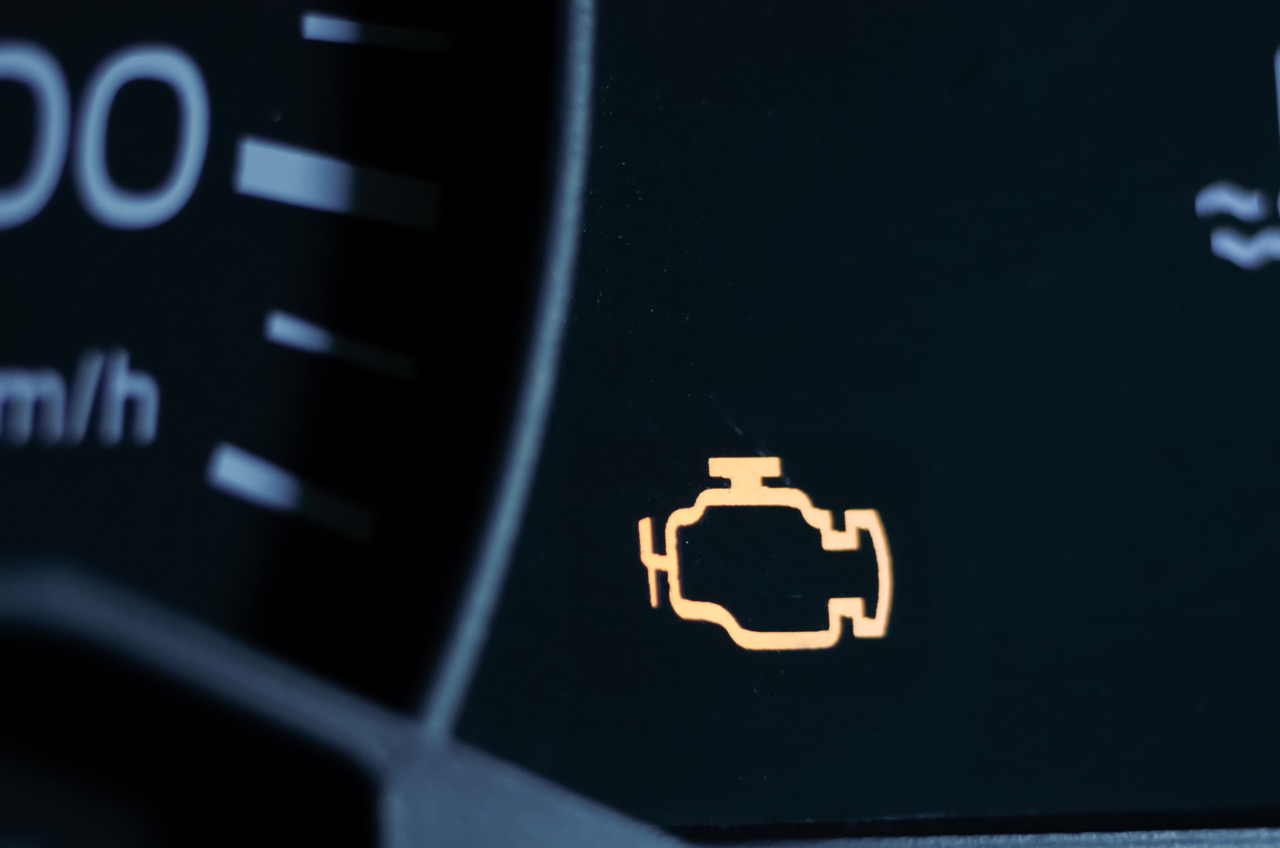Oh, the “Check Engine” light! Is there any more frustrating dashboard alert to be found? It illuminates when the vehicle’s onboard computer registers a problem, typically relating to the emissions control system.
The Most Common Reason for the Check Engine Light
Usually, the most common reason for the engine light to come on is that your car is due for its annual safety and emissions inspection. Just kidding… but not really. Have you ever noticed that the light comes on every year around registration time?
In all seriousness, the check engine light is usually triggered by one of the following common problems:
Faulty Oxygen Sensor
All vehicles need the right mix of oxygen and fuel to function properly. The oxygen sensor ensures there’s the correct ratio in your vehicle’s exhaust. If there’s a problem with the sensor, your vehicle doesn’t know if that ratio is being upheld, and it turns on the check engine light to prompt you to take a look.
Loose Fuel Cap
You might get lucky and just have a loose fuel cap on your tank. When it’s not properly tightened, your onboard computer will let you know. The cap is essential for trapping fuel fumes in the tank and maintaining the right amount of pressure throughout the fuel system. So, before you bring your car in to Schulz Garage for your check engine light, take a peek at your fuel cap first.
Faulty Catalytic Converter
An integral part of your exhaust system is the catalytic converter. It reduces toxic emissions produced by your vehicle. If there’s a problem, you want to know about it right away. Hopefully, though, your check engine light isn’t related to your converter because they’re an expensive part to replace.
Faulty Spark Plugs
Part of the ignition system, spark plugs can trigger the engine light on your dash. If they wear out or aren’t gapped properly, you might experience misfiring or problems accelerating your vehicle.
Maybe your spark plugs are fine, but the wires are faulty. We can take a look in the engine to determine if the plugs or the wires are the reason your computer signaled for you to have your engine checked.
Of note: Spark plugs are only found in gasoline engines, not diesel. Also, newer vehicles (circa 1980 and later) don’t use spark plug wires anymore. That component has been replaced by coil-on-plug ignition elements.
Faulty Ignition Coil
Spark plugs need an ignition coil to generate the electricity they need to spark. Without working coils, spark plugs can’t ignite fuel and air to create the energy your vehicle needs to run. Even just one faulty ignition coil can cause your check engine light to illuminate.
Faulty Mass Airflow Sensor
If the MAF isn’t working, your vehicle’s onboard computer doesn’t know if it’s getting enough oxygen into the engine. It’s essential to driving at different altitudes and ensuring the right air-to-fuel ratio for combustion.
Vacuum Leak
Emissions are routed through your vehicle with a vacuum system. The vacuum hoses are susceptible to cracking, which causes leaks. If there’s a leak in the system, your check engine light is going to shine bright.
Faulty Exhaust Gas Recirculation Valve
When the EGR valve is clogged, it affects how your emissions system performs. Without a functioning EGRV, you may have high amounts of nitrogen oxide in your engine.
Read through that list again and notice a common theme. Many of the problems are related to air flow or oxygen levels in your vehicle. Maybe now it makes sense why your mechanic suggests you change the air filter in your vehicle’s engine!
If you bring your vehicle into Schulz Garage auto repair, we can read your vehicle’s computer codes to see why it flicked on the check engine light. Using an onboard diagnostics (OBD-II) scanner, we’ll be able to pinpoint the problem and start working on the solution. You can also use a scanner yourself, but sometimes the codes aren’t straightforward and there can still be some guesswork involved in determining the problem.
Preventing The Dreaded Check Engine Beacon
Routine maintenance on your vehicle, such as regular oil changes, replacing filters, and having eyes on the engine, can prevent problems that illuminate the check engine light. Bringing your car in for regular tune-ups, instead of waiting until there’s an obvious problem, is often the best way to save yourself time and money when it comes to auto repair.

